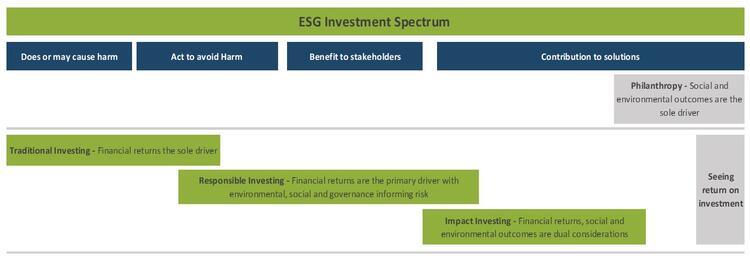CoStar Column: The rise of impact investing
01 February 2019CoStar Column: The rise of impact investing
01 February 2019Attempts to reduce the harmful impact of human existence on the environment are not new. The environmental or ecology movement has its roots in the 19th century. But it is only relatively recently that the political and social mainstream has paid it more attention. The fact that the majority of organisations embed environmental, and social governance (ESG) in their business processes, underlines the importance the subject has assumed in recent years.
But the debate is constantly evolving. Lately, it has become increasingly nuanced which, from the point of view of investment asset classes such as real estate, means a shift to a much broader purview. It is no longer sufficient to think solely of how best to manage limited resources sustainably or how to meet harmful gas emission reduction targets.
The focus now is on adopting a more active and intentional approach to investment strategy – one that is both measurable and contributes to creating a better or additional outcome than might otherwise have been delivered. Hence, the notion of ‘impact investing’. The buzz phrase of the moment is very consciously imbued with a deliberate sense of purpose.
It’s a concept that sits comfortably with ASI’s general approach to real estate investment. All of the specific properties we own and manage around the world provide local communities with useful spaces. However, we’re acutely aware that buildings are but one element of creating communities.
As investment managers, returns are also key. The diagram below demonstrates where impact investing currently sits on the typical investment spectrum.

According to the most recent Global Impact Investing Network Annual Survey, the size of the global impact investing market doubled from $114 billion in 2017 to $228 billion in 2018. The implication being that asset managers will likely seek to create new investment products to meet demand.
ASI is in the vanguard of this move, with products already in the market notably, the Global Equities Impact Fund with the Global Sustainability Trust currently capital raising. These vehicles use the Global Impact Investing Network framework to direct capital to specific challenges or problems that fit within the UN Sustainable Development Goals.
Challenges
In our recent Challenging Perceptions research paper, ASI explored the link between ESG integration and financial returns in the real estate sector. The findings indicated that sound ESG integration delivered at least market returns. The paper highlighted that a positive environmental and social benefit could also be achieved.
Indeed, there is general consensus among real estate investors and asset managers that a positive link exists between ESG risks and opportunities. The question now, however, is where does good ESG integration end and impact begin – how can one avoid the risk of ‘impact washing’?
ASI’s proprietary ‘ESG momentum’ tool plots where a particular real estate fund and its underlying buildings sit on the ESG investment spectrum, versus the house view of major global drivers for change. This provides a helpful reference point for plotting a fund’s progress and momentum in creating solutions that combat the long-term challenges of climate change, growing social inequalities, and unsustainable production and consumption in a tangible, measurable way.
The tool facilitates the creation of social or environmental benefit where that benefit aligns with any specific fund’s investment strategy, the appetite of that fund’s clients, and the needs of a particular local market or community where it is active.
From ASI’s point of view, this process is the start of ensuring that the principles of impact investing become a standard consideration across all our real estate funds. In fact, over time it’s expected that issues that today are considered ‘impact’ will become more mainstream in the not too distant future.
This doesn’t mean that there is no space for a direct impact fund, far from it. We are actively seeking to develop a value-add fund, that will aim to address specific Sustainable Development Goals, using the ESG momentum tool to measure the impact of the strategy.
So far as indirect real estate investment is concerned, the ability to deploy capital into relatively niche vehicles that may have a specific mission or purpose, is an effective way to access impact opportunities. Examples of these types of investment vehicles might include the provision of affordable homes; accessible homes for wheel chair users; or utilizing circular or alternative construction materials.
Clearly, positive impact doesn’t happen by accident. It is the result of intentional investment that addresses a specific environmental or social issue.
Thinking ahead
Impact investing, in its present guise, will continue to evolve and change and authentic commitment will play a key role. For example, rather than simply offering impact funds or ESG strategies to clients, asset managers that genuinely believe in the principles of impacting investing will need to ensure that their own operations meet the standards that they expect of their investments.
This will always be the litmus test for those whose strength of belief will help to innovate and move things forward. The other option is to simply follow the market and tick a box. But history, and future commercial success, may judge the merits of that approach quite harshly.
